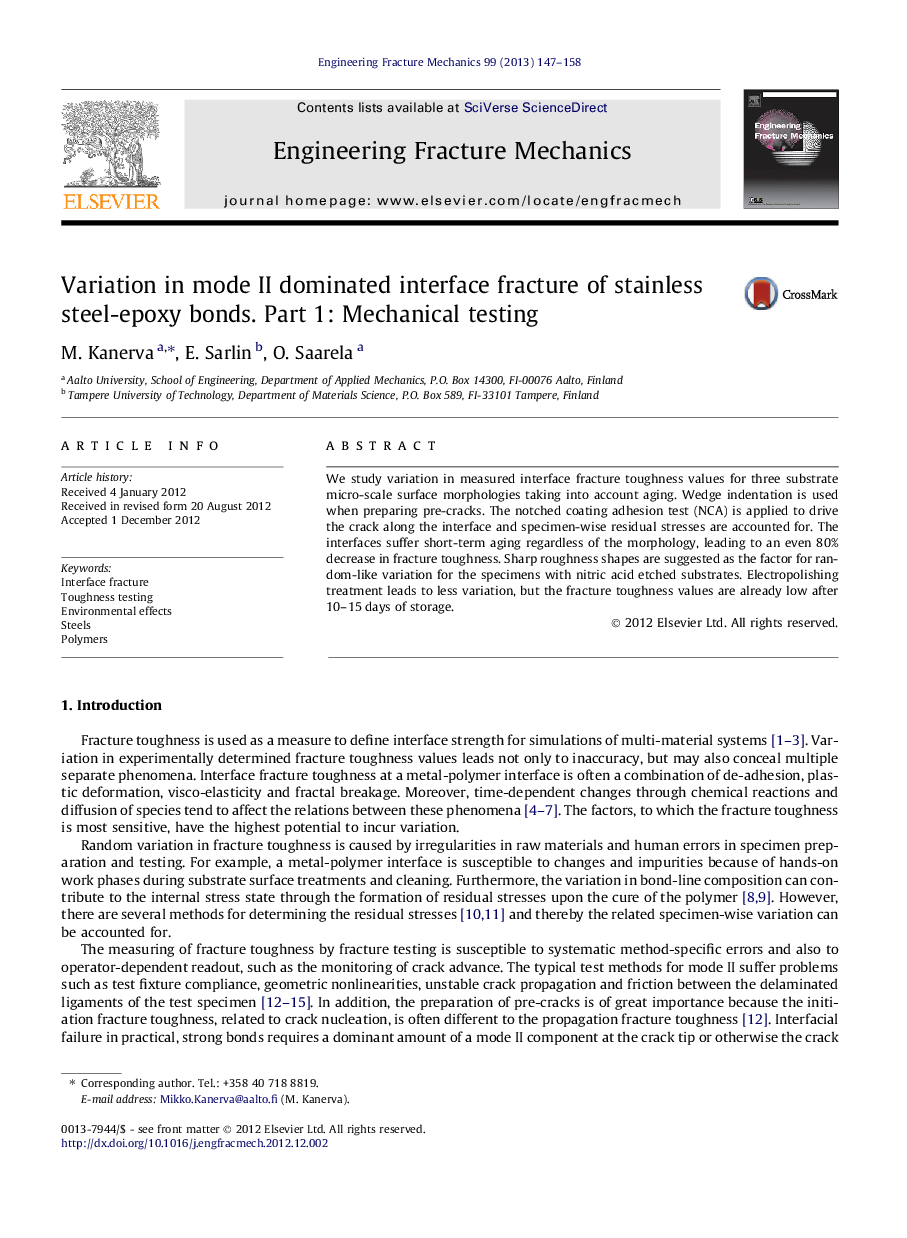| کد مقاله | کد نشریه | سال انتشار | مقاله انگلیسی | نسخه تمام متن |
|---|---|---|---|---|
| 775049 | 1463126 | 2013 | 12 صفحه PDF | دانلود رایگان |

We study variation in measured interface fracture toughness values for three substrate micro-scale surface morphologies taking into account aging. Wedge indentation is used when preparing pre-cracks. The notched coating adhesion test (NCA) is applied to drive the crack along the interface and specimen-wise residual stresses are accounted for. The interfaces suffer short-term aging regardless of the morphology, leading to an even 80% decrease in fracture toughness. Sharp roughness shapes are suggested as the factor for random-like variation for the specimens with nitric acid etched substrates. Electropolishing treatment leads to less variation, but the fracture toughness values are already low after 10–15 days of storage.
► We analyze three-phased interface crack propagation according to strain-rate data.
► Toughness variation is greatest for interfaces with sharp shapes on substrates.
► AISI 304-epoxy interfaces suffer a systematic decrease in toughness due to a short-term aging.
► AISI 304 substrate micro-roughness does not affect the aging of the interface.
Journal: Engineering Fracture Mechanics - Volume 99, February 2013, Pages 147–158